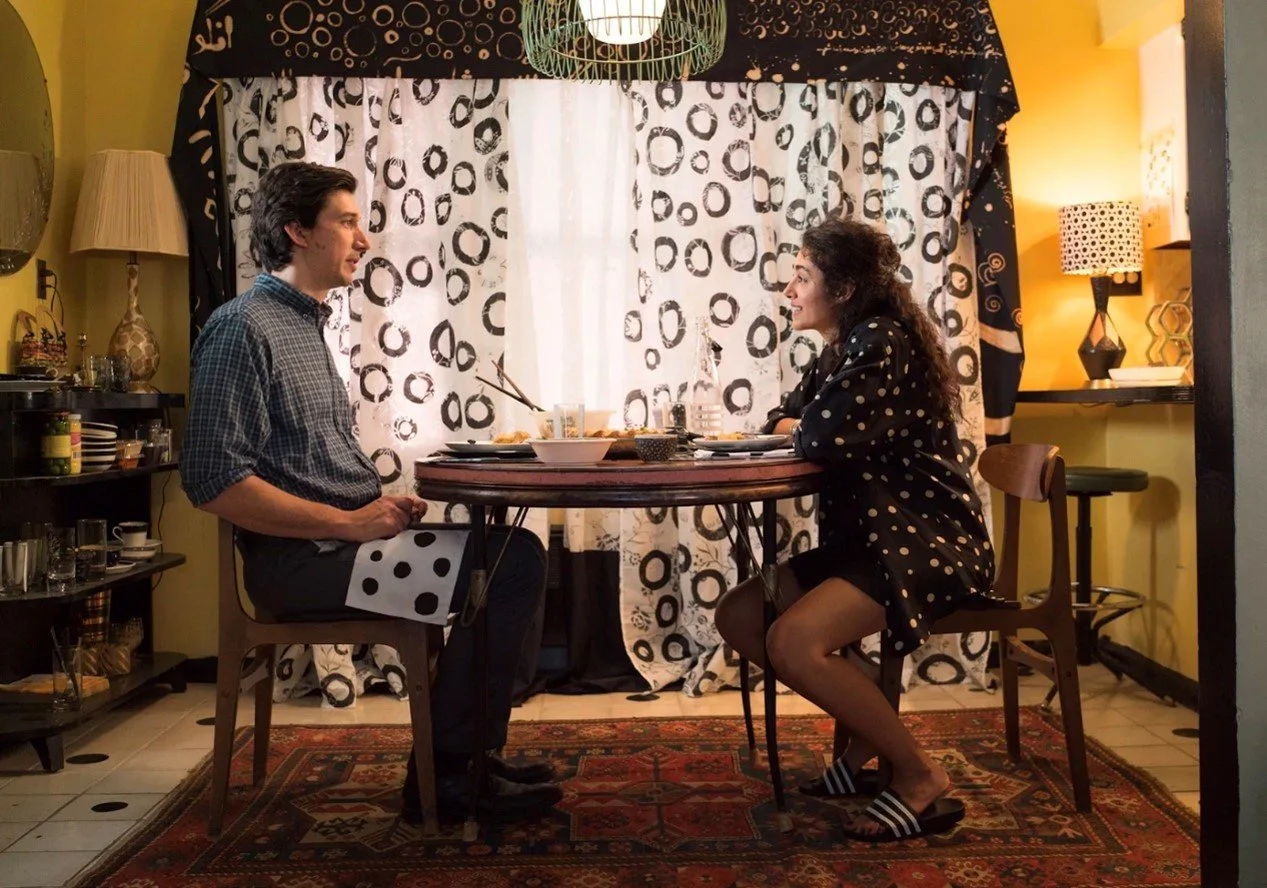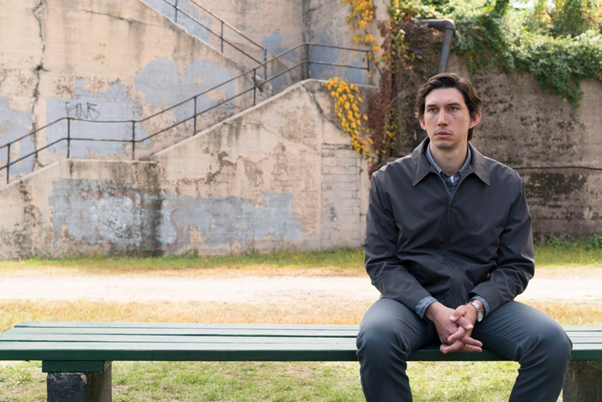The Philosophy of 'Paterson': Finding Beauty and Inspiration Within Our Monotonous Lives
By Rina Anshina
“His poetry is imbued with the modest substance of his life.”
Richard Brody, The New Yorker
It seems nowadays that we forget to be present and to enjoy the mundanity of our lives, and instead find ourselves constantly looking towards the future to counter the monotony of our daily schedules. Like a soft lullaby or a prayer to such individuals, Jim Jarmusch’s 2016 movie Paterson celebrates our mundanity, and the magic we could find within it.
In a nutshell, Paterson is a boring movie. No, a better way of explaining it is that it is a movie where nothing really happens. We follow Paterson, a bus driver in the town of Paterson, as he goes about his day on a certain week. His daily routine is extremely mundane: he wakes up around 6:15 AM, goes about his job, comes home for dinner, then takes his wife’s French bulldog Marvin (who does not like Paterson at all) on a walk before finishing off the day with a pint at a local bar. The movie follows a linear narrative plot, where our protagonist does not develop as a character through any sort of extraordinary conflict. Paterson remains as stoic as ever, a quiet and polite bus driver.
So far, from what I have described, Paterson seems like a markedly uninteresting protagonist. Yet it is this quality which makes him all the more charming when we find out about his passion for writing poetry. Paterson carries around a small “secret” notebook, in which he vigorously scratches stanza after stanza, any chance he gets while at his job. Images of these writings are layered over the scene of Paterson’s driving, giving us an intimate glimpse into his daydreams. What makes this poetry (by American poet Ron Padgett) beautiful is Paterson’s ability to find inspiration for his writing in the boring, monotonous cycle of his own life. He does not need extraordinary events to create art. As Jim Jarmusch has said, it is the set routine of his job as a bus driver that allows him to drift away from his work and instead be absorbed by the conversations and visuals around him. Paterson writes poetry on general observations he has made throughout the day, putting small trinkets together to create something significant.
Paterson doesn’t own a phone, so he can’t scroll through a social media feed every time he has a break. Instead, he spends the time daydreaming and looking around his environment. Though this does cause issues later in the movie when he is unable to call for help when the bus breaks down, Paterson still refuses to rely on a device. Why? Well, it is quite simple. As Paterson himself says, he doesn’t see the need for it: the world worked just fine when mobile phones weren’t around. Hence, Paterson is not distracted by a screen, and is able to quietly listen and let others speak, or drink in the almost unnoticeable details of a particular space, something most people wouldn’t even give a second glance. He notices the soft ray of morning sun grazing his wife Laura’s shoulders, he notices the witty conversations between the young anarchists on the bus, he notices the little girl who, just like him, writes poetry in a little “secret” notebook. He notices the font used for the Ohio Blue Tip matches which he and Laura use at home, and he notices how his wife’s dreams somehow come into his own reality. His deep love for his life, his wife, and his art allows him to detect these little miracles within the everyday. His poetry is thus a love letter to and a celebration of his wife and his life, the two essential elements of his artistic identity.
We as the audience are not given any background context about him as a character. The only hint we are given is the photograph of him as a marine (a real picture of Adam Driver during his time in the army), yet this information does not illuminate much. Side characters such as Paterson’s eccentric wife Laura, the barkeeper Doc, and the heartbroken romantic Everett are similarly distanced from the audience. This is intentional. We don’t need to know about Paterson or any of these characters in detail. We are merely thrown into a week of someone’s life and must be content with what we are permitted to see. Just as Paterson removes himself as a protagonist and instead plays passive viewer and listener to so many of his passengers and acquaintances, the movie forces this role upon us the viewers as well.
The movie wants us to stop thinking of ourselves as the centre of the world, and instead as an individual within the massive and complex structure of the world. This is not to say Paterson is a cold and dismissive character. The opposite is in fact the case: Paterson loves and cares for others deeply. He does this simply by listening to others, which we can often neglect to do. We see how so many people find comfort in his mere presence. He is a true poet who is able to bring his words into fruition, planting seeds of hope and inspiration in others. Paterson always finds something to compliment in others, no matter how big a role they play in his life. His gentle encouragement of the rapper in a laundromat and of the little girl with her poetry notebook shows his great respect for others. The movie not only promotes a more fulfilling life through observation and presence, but also through its encouragement to produce art, no matter an individual’s station in life.
What is the moral of this movie? Should we simply throw away our phones and become bus drivers as we lead a monotonous life just like Paterson? Well, no. Instead, the movie encourages us “to go back to the things themselves, to encounter the world on its own terms by observing the feelings it provokes in us”. This way, we can become more aware and understanding of our own presence and existence, leading to a more satisfying life as we begin to value the small details. We are not supposed to romanticize Paterson’s life, no matter how idyllic or peaceful it looks. Instead, we should learn from Paterson, to be able to lead our own lives, and be content with its reality. That is the philosophy of Paterson.
Works referenced
Kasman, Daniel. 2016. “Review: The Tender Poetry of Jim Jarmusch’s ‘Paterson.’” MUBI. December 27, 2016. https://mubi.com/notebook/posts/review-the-tender-poetry-of-jim-jarmusch-s-paterson.
Kenny, Glenn. 2017. “Paterson Movie Review & Film Summary (2016) | Roger Ebert.” Https://Www.rogerebert.com/. December 27, 2017. https://www.rogerebert.com/reviews/paterson-2016.
Martens, Matthew. 2017. “REVIEW: Paterson (2016) Dir. Jim Jarmusch // BOSTON HASSLE.” Bostonhassle.com. January 24, 2017. https://bostonhassle.com/review-paterson-2016-dir-jim-jarmusch/.
Nast, Condé. 2016. “Jim Jarmusch’s ‘Paterson’ and the Myth of the Solitary Artist.” The New Yorker. December 30, 2016. https://www.newyorker.com/culture/richard-brody/jim-jarmuschs-paterson-and-the-myth-of-the-solitary-artist.
PBS NewsHour. 2017. “‘Paterson’ Is an Ode to Making Art from the Details of Everyday Life.” YouTube. https://www.youtube.com/watch?v=Tdo55HzyCPM.
Wilkinson, Alissa. 2016. “Paterson, the Quietly Philosophical Tale of a Bus-Driving Poet, Is One of 2016’S Best Films.” Vox. December 28, 2016. https://www.vox.com/culture/2016/12/28/14089484/paterson-review-adam-driver-jim-jarmusch-phenomenology-poetry.
ST.ART does not own the rights to any images used in this article.



